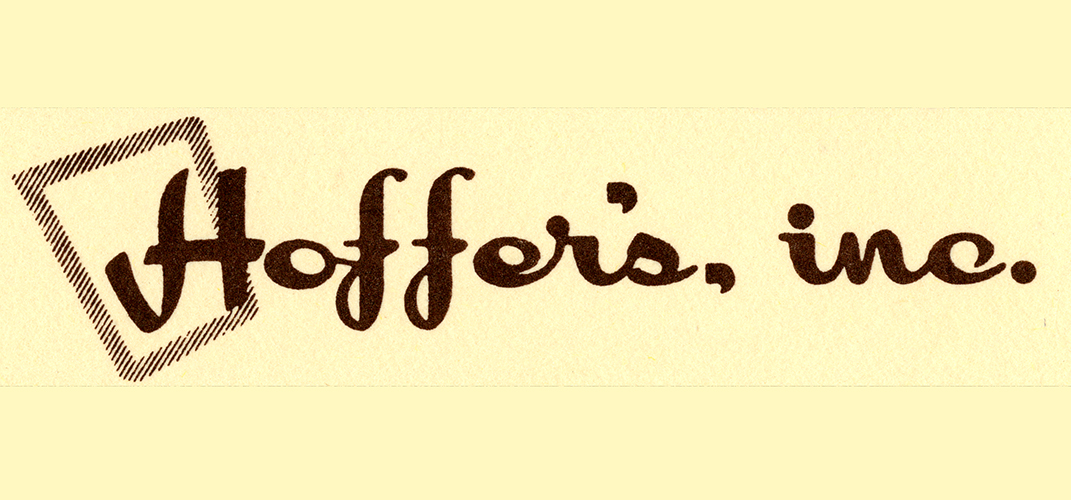Hoffer Glass
Hoffer Glass
Anton Hoffer was a man who understood how to build a company. From humble origins providing the niche service of automotive glass repair, Hoffer built the company that bore his name into an empire of glass, paint, wallpaper, carpeting, retail stores, and eventually window wall systems.
Origins
Over the course of the 1920s, it was clear that the automobile--a relatively new form of transportation--was here to stay. By the end of the decade, there were 19 automotive dealers that had been established in Wausau alone (with eight more in nearby communities), and companies to store, repair, customize, service, and fuel these automobiles emerged alongside the dealers.
Anton Hoffer returned to Wausau in 1929, after spending a few years elsewhere learning the glass business, and started one of those companies to replace broken glass in cars. From their business at 205 Fourth Street, they specialized in replacing plate and safety glass (an increasingly important feature for automobiles, as people realized how deadly plate glass could become during a crash).
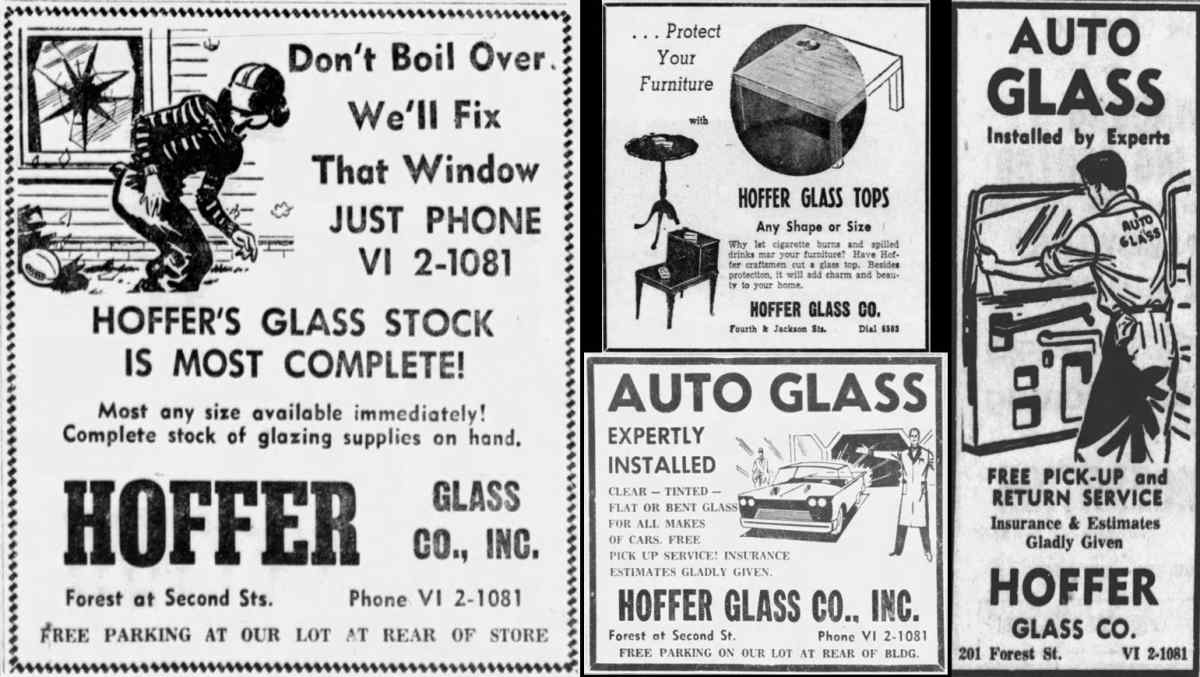
^ A variety of ads that appeared in the Wausau Daily Herald, 1950s-1960s. Hoffer Glass continued to provide auto glass replacement, in addition to other glass-related services.
Hoffers' company was briefly known as "O.K. Glass" but was changed to the "Wausau Auto Glass Company" a few months into 1930, and over the next few years the name occasionally dropped the "auto" until it became simply the "Wausau Glass Company." This name change in the early 1930s reflected the wider inclusion of other glass-related services besides replacing glass in automobiles, and the company would diversify their products even further over the next decade.
In 1931, the company had become a vendor for "Esser's" brand paints, enamels, and varnishes. And over the next few years expanded to providing glass replacement and installation services for storm windows, glass-components in furniture, and "anything concerning glass and its installation."
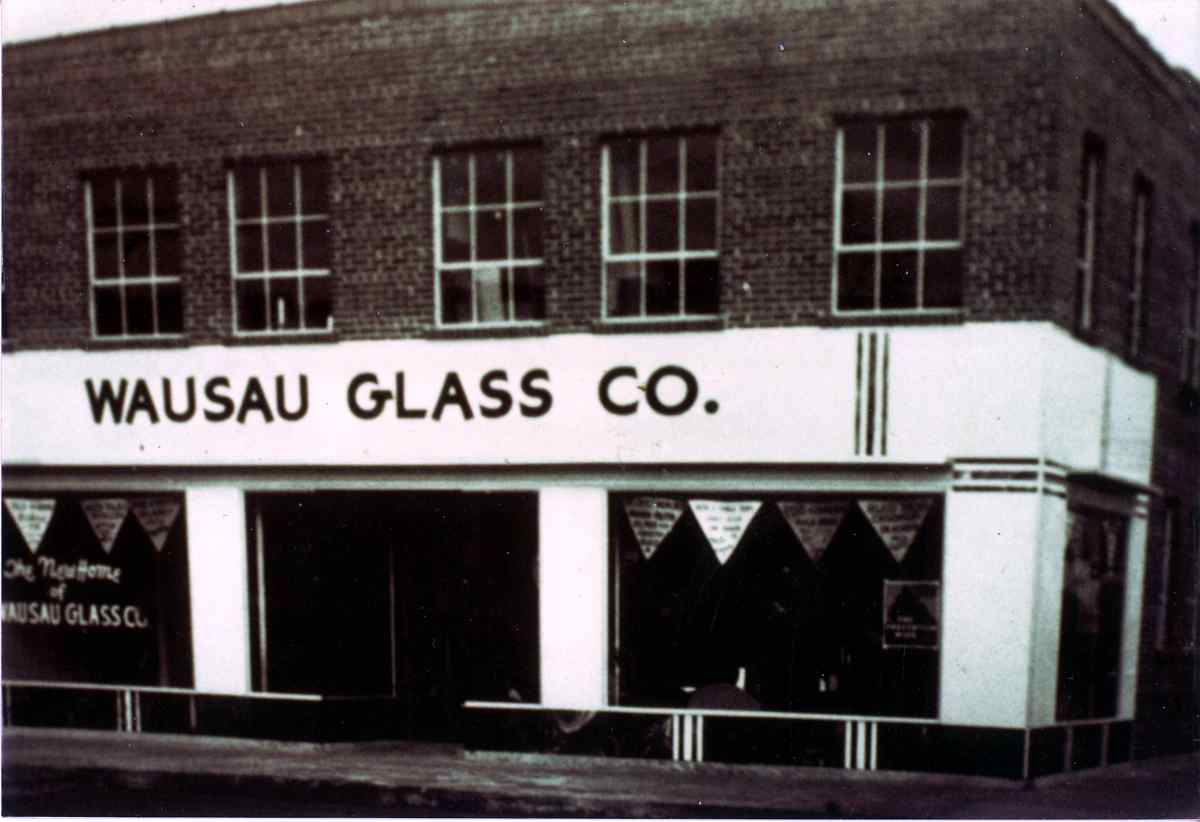
^ The new Hoffer Glass building on the corner of Fourth and Jackson in Wausau, opened in October of 1937.
Mid-Century Expansion
Alex Radant had joined Hoffer in 1938, and he became instrumental in moving the company towards another major industry, paint. Radant convinced Hoffer to develop their own line of paints (instead of being a retail distributor for other producers). This direction would also come to include carpet and wallpaper lines through the growing retail arm of the company in the second half of the century.
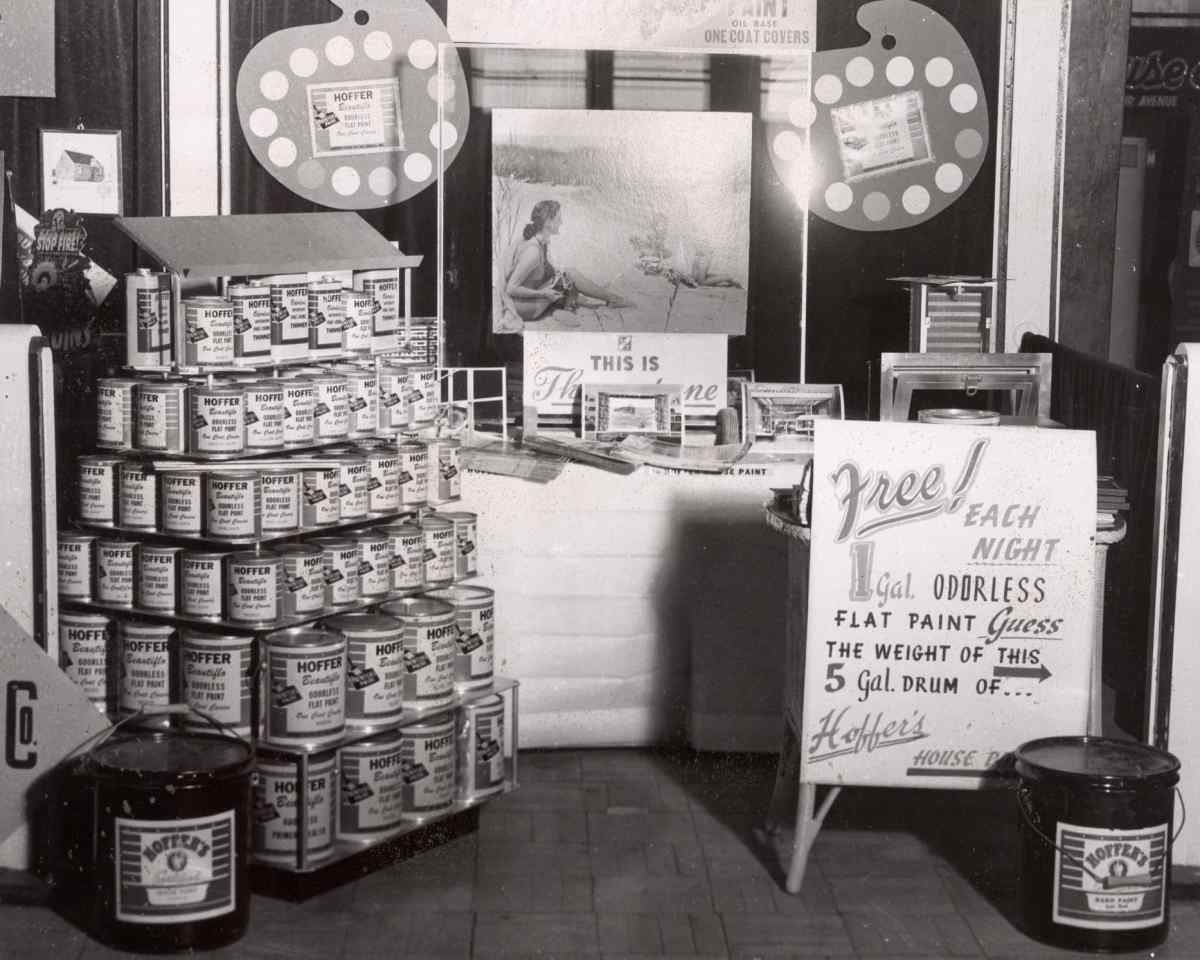
^ A display for Hoffer's line of paints, from the 1950s-1960s.
While less impactful to the overall business, Hoffer Glass also added a carpet division in 1967 and also experimented with wallpaper. Throughout its existence, the core part of Hoffer's business was often its retail operations, which sold everything from paint to carpeting.
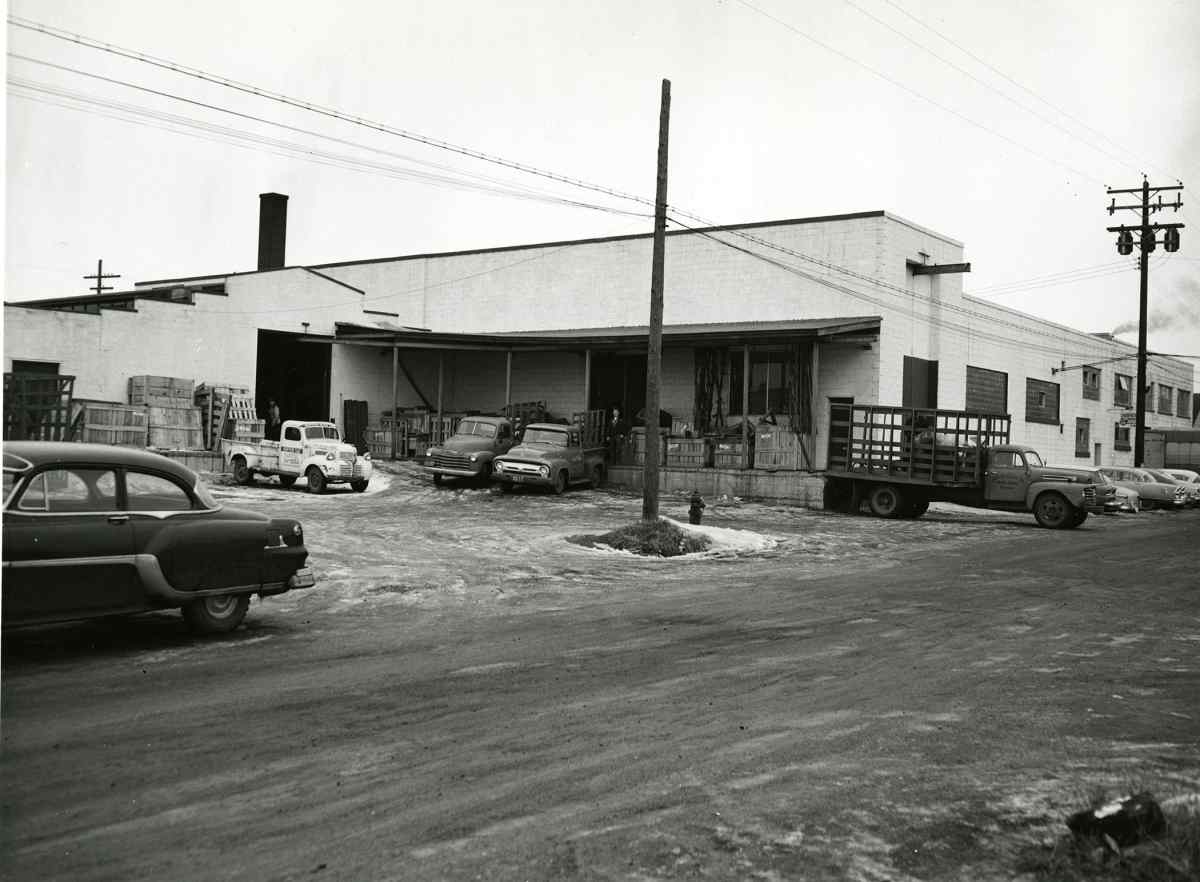
^ The Bellis Street facilities opened in 1941 became the center for Hoffer's manufacturing of paint
There was also physical expansion outside of Wausau. In 1940, Hoffer manager Bob Henning opened a branch location in Green Bay. Over the 1950s and 1960s, further retail office branches were opened in Milwaukee and Minneapolis, and field warehouses were opened in Milwaukee, Madison, and Minneapolis.
The Other Hoffer Glass Companies
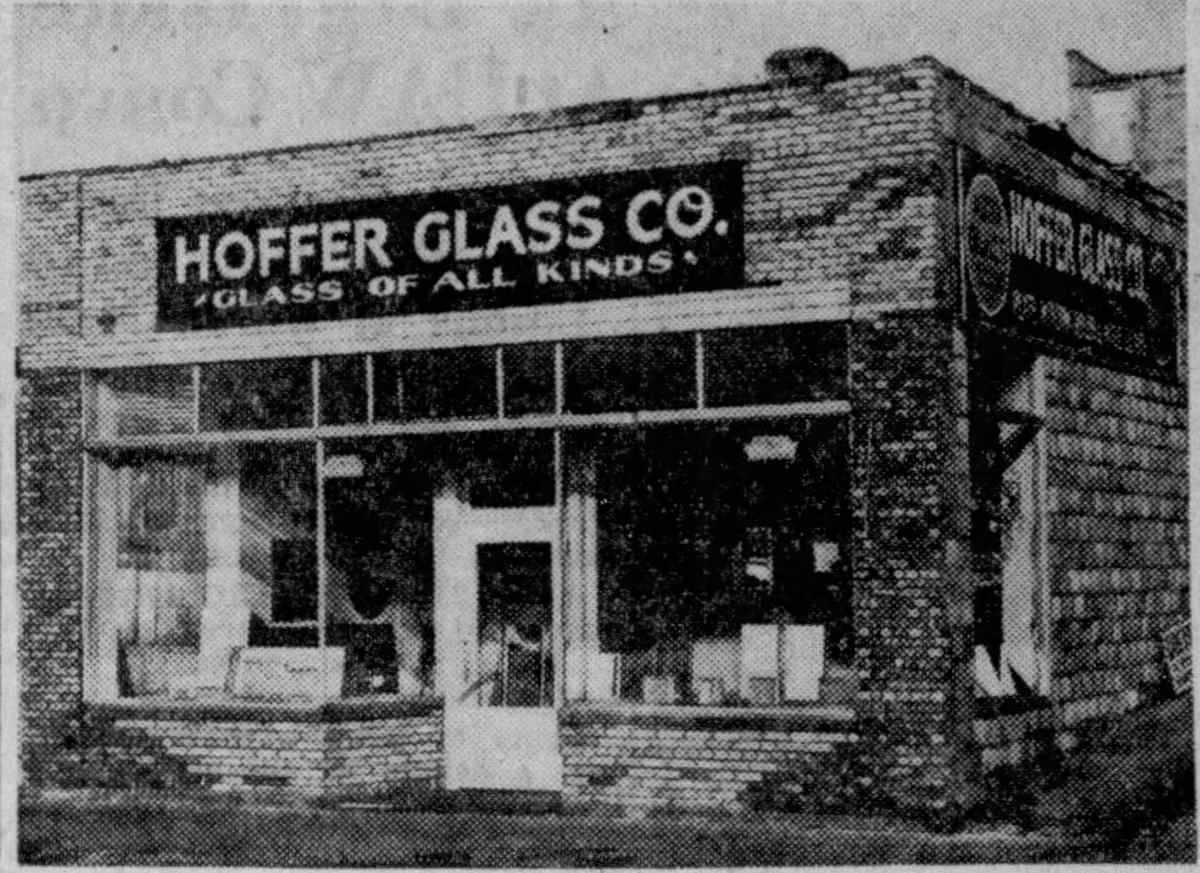
^ A new Hoffer Glass building as reported in Madison's The Capital Times (23 March 1946).
There was more than one Hoffer Glass company in Wisconsin. Seven years after Anton began his auto glass replacement company in Wausau, a Hoffer Glass Co. was established in Madison by August "Cal" Hoffer. The following year, another Hoffer Glass was appeared in Appleton, under the name George J. Hoffer Glass. Both Hoffers Glass Co. started providing glass replacement and installation for cars.
But it was not entirely a coincidence that three different men named Hoffer opened auto glass repair companies in Wisconsin in the 1930s. August, Anton, and George were brothers, who were all born on a farm outside Athens. Despite the same name and similar business model (at least initially), the Hoffers Glass Companies were completely unconnected from each other.
Hoffer Glass as a Glass Company
Since its founding, a big part of the Hoffer business had been replacing and installing glass, as well as selling mirrors and glass for furniture. Paint and retail were fueling the expansion of the company, but glass and windows would become an increasingly important focus as well.
In particular, the glass block wall had become a popular architectural component. The public was first introduced to this novel building material in 1933 at the Chicago Worlds Fair by the Owen-Illinois company, and in the 1940s Hoffer became a franchised distributor for their Insulux brand glass blocks in the late 1930s. These thickness of the glass blocks let light through to the building without sacrificing structural integrity, and therefore allowed for larger windows in buildings that otherwise could not support. This led glass block walls to become fixtures in just about every kind of building besides residential homes.
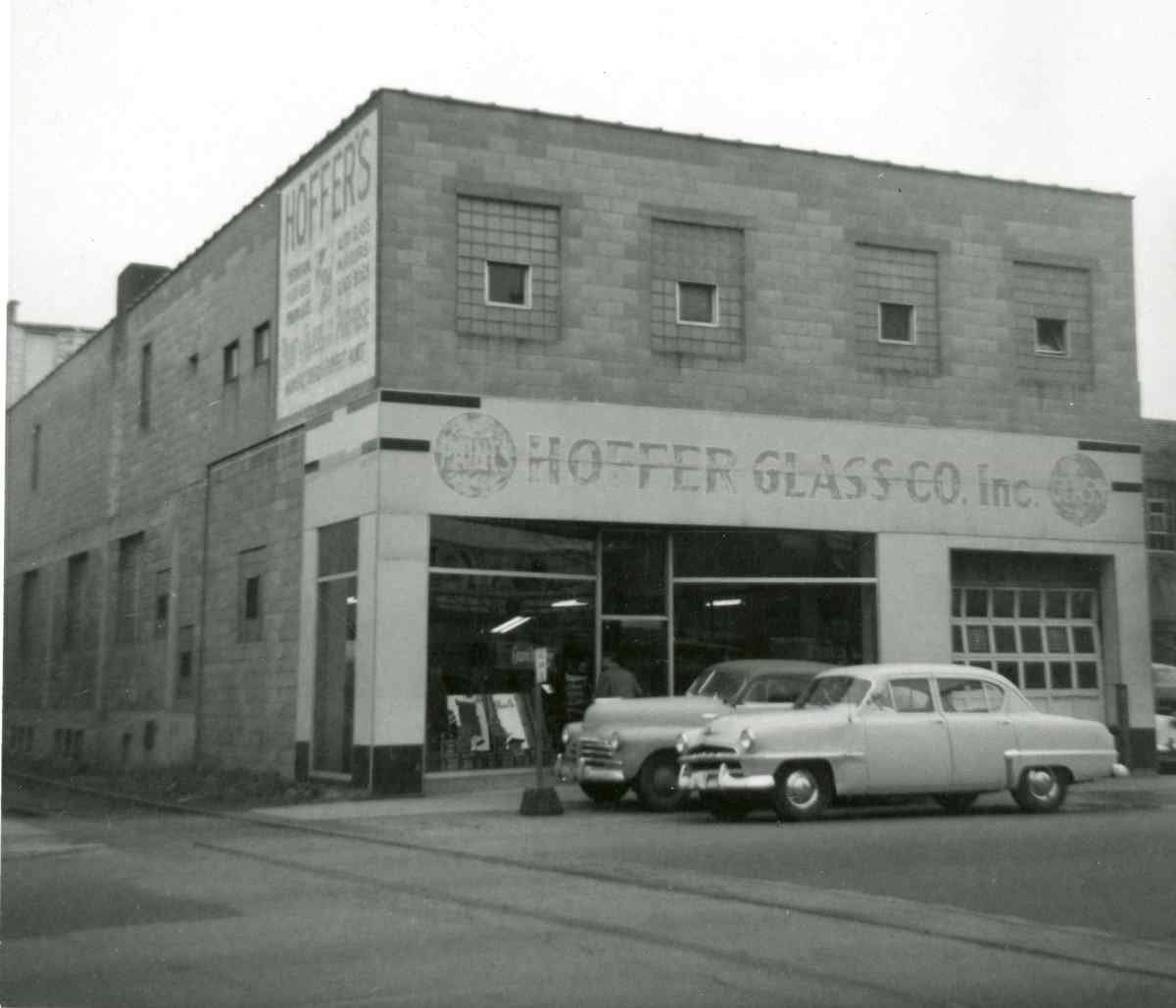
^ The street-facing entrance to Hoffer Glass shows some glass block windows and the ventilators designed by Hoffer (and produced by Marmet) on the second floor.
But the big downside to using glass block windows--as Hoffer recognized after working with builders and architects--was that because the window became part of the wall itself, the windows could not be opened. Hoffer Glass experimented with ways to fabricate a ventilator mechanism, which led to the creation of Marmet in 1946 to produce this new product. Marmet (or Marathon Metals as it was originally called), would go on to become a leader in the new designs for window-walls, and Hoffer Glass helped to sell the Marmet products through its extensive distribution network.
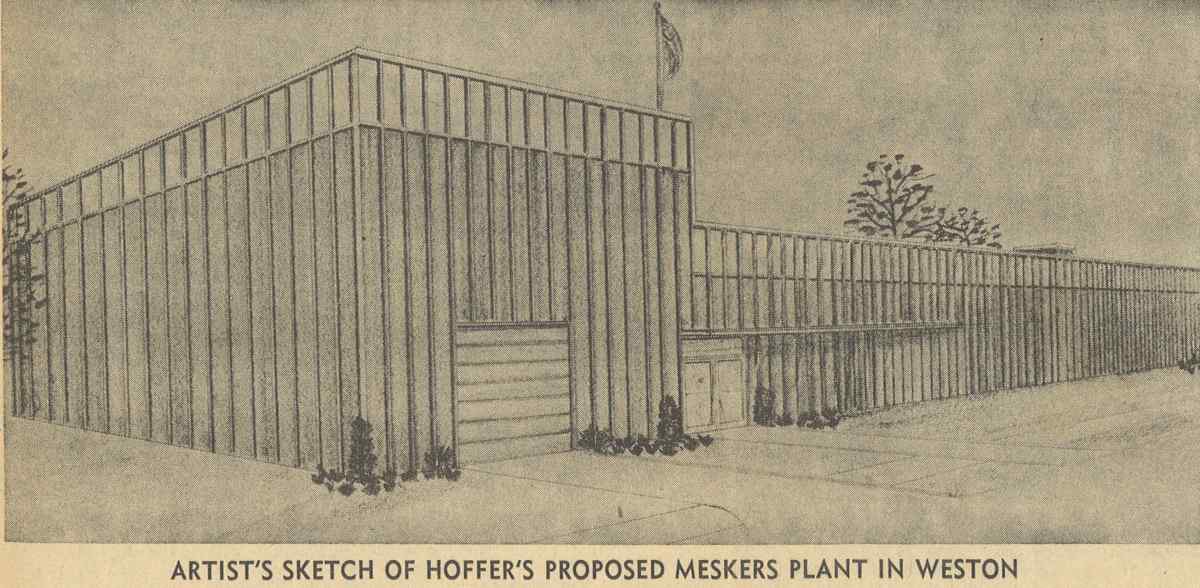
And Marmet was not the only sister company Hoffer Glass operated during this time. In 1963, Hoffer purchased interest in the St. Louis-based steel manufacturer, Mesker, and moved its production to Weston. Although the plant built in 1965 to produce steel-framed windows ended up closing within three years, the facilities would later become home to Hoffer's wholesale and auto glass replacement divisions. And the new Weston street on which it was built has retained its name to this day.
Bigger and Smarter
By the 1970s, Hoffer Glass had several different, but connected areas of business. A new facility on Forest Street housed the retail outlet for the Wausau location as well as the glass replacement and servicing department. Bellis Street was home to the "coatings division" that produced paint and similar products. And although the new Mesker plant had not worked out, the company opened further facilities in Weston.
1974 saw the opening of a dedicated facility in Weston to fabricated insulated glass, which was becoming popular in the increasingly energy-conscious atmosphere of the 1970s. Three layers of panes trapped a pocket of "dead" air that would insulate the window, which helped keep buildings from large temperature fluxuations and reduced condensation due to changes in temperature. Early in 1979, the glass manufacturing facility was expanded to produce tempered glass as well.
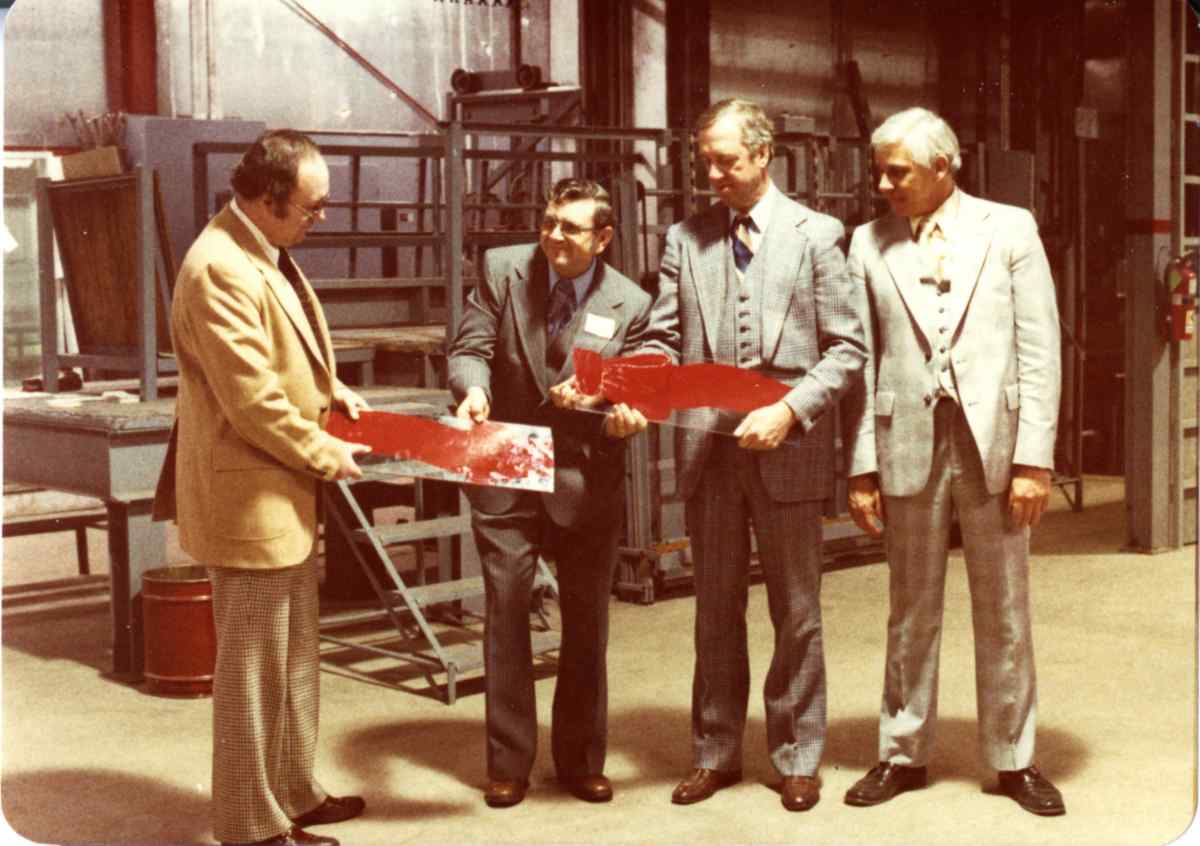
^ To dedicate the new tempered glass addition in 1979, officials cut a glass ribbon. Pictured L to R; Richard Mayer (County Board Chairman), Vilas Machmueller (Weston chairman), Phil Douville (Hoffer's Vice President), and Marty Gaugush (manager of Glass Fabricating Division)
Hoffer Glass after Anton Hoffer
In 1986, Anton Hoffer died. He had given up control of the company, but was still involved.
A short time after Hoffer passed, the glass manufacturing facilities were sold to Churchill Industries of Minneapolis. Although parts of the Marathon County business were moved out of the area under Churchill (notably the financial operations in 1992), the manufacturing center remained in Marathon County.
In 2000, those production facilities were sold to Oldcastle Glass, the largest producer of glass in the United States.

